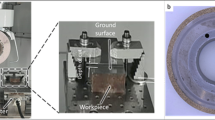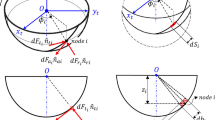Abstract
Reducing wastage from the unnecessary cutting of raw material is a key issue in the manufacture of diamonds and gemstones. The accuracy with which stones are graded prior to their being processed through the various manufacturing stages of cutting and finishing is a key determinant of yield and so profit. This presently manual activity requires a skilled craftsman to assess the grade and spot opportunities for upgrading through the judicious cutting away of imperfections in the raw material. There is however a balance to be struck between raising quality and lowering wastage. This paper describes iGem, an artificial intelligence tool that integrates rule-based knowledge representation, fuzzy logic and genetic algorithms to produce a system for automating, and introducing consistency into, the grading of diamonds and gemstones. In this paper we show how iGem derives its knowledge from repeated examples of previously correctly graded stones and can improve its performance by learning from experience. The industrial benefit of iGem extends beyond simply improving grading but also to the introduction of consistency and so greater control into the overall manufacturing process. We believe the approach described has application in other situations where overall yield and manufacturing efficiency depends on trade-off decisions between removal of imperfections and loss of material as well as consistency in quality assessment. A further noteworthy aspect of the iGem project is its development of an objective quality assessment technique out of a hitherto substantially subjective one.
Similar content being viewed by others
References
Anand, S. and Hughes, J. (2000) Data mining: looking beyond the tip of the iceberg, Faculty of Informatics, University of Ulster, Ulster http://inchinn. infj.ulst.ac.uk/htdocs/white.html.
Au, W. -H. and Keith, C. C. (2001). Classification with degree of membership: a fuzzy approach. International Conference on Data mining.
Bakon, A. and Szymanski, A. (1993). Practical Uses of Diamond, Ellis Horwood.
R. Brachman T. Anand (1996) The Process of Knowledge Discovery in Databases U. Fayyad G. Piatesky-Shapiro (Eds) In Advances in knowledge Discovery and Data Mining AAA/MIT Press Menlo Park, California 573–592
Cattral, R., Oppacher, F. and Deugo, D. (1999) Using genetic algorithms to evolve a rule hierachy. Third European Conference on Principles of Data Mining and Knowledge Discovery (PKDD99), Springer-Verlag, Prague, pp. 289--294.
K. Cios W. Pedrycz R. Swiniarski (1998) Data Mining Methods for Knowledge Discovery Kluwer Academic Publishers London
Cooper, M. (1991) Laser technology in the diamond industry, in International Diamond Technical Symposium, P. Cooke and A. Caspi (eds), CSO, Tel-Aviv, 6, 1–6.
J. F. Elder D. Pregibon (1996) A statistical perspective on knowledge discovery in databases U. M. Fayyad G. Piatetsky-Shapiro P. Smyth R. Uthurusamy (Eds) Advances in Knowledge Discovery and Data Mining AAAI Press / The MIT Press Menlo Park, CA 1–34
Field (1992) The Properties of Natural and Synthetic Diamond Academic Press New York
Gaines, B. R. (1996) Experiments with a new boosting algorithm. Thirteenth International Conference on Machine Learning
Goldberg, D. (1989) Genetic Algorithms in Search, Optimization and Machine Learning, Addison-Wesley, Reading
R. Groth (2000) Data Mining: Building Competitive Advantage Prentice-Hall New Jersey
Krishnapillai, A. (1995) An Automated System for the Processing of Precious Stones, Doctoral Thesis, Department of Engineering, University of Cambridge, Cambridge
D. J. Hand H. Mannila P. Smyth (2001) Principles of Data Mining (Adaptive Computation and Machine Learning) MIT Press Menlo Park, CA
J. W. Han M. Kamber (2001) Data Mining: Concepts and Techniques Morgan Kaufmann San Francisco
Y. -C. Hu R. -S. Chen G. -H. Tzeng (2003) ArticleTitleFinding fuzzy classification rules using data mining techniques Pattern Recognition Letters 24 IssueID1 509–519
Y. -C. Hu (2002) ArticleTitleMining Fuzzy association rules for classification problems Computers and Industrial Engineering 43 IssueID4 735–750
G. Lenzen (1983) Diamonds and Diamond Grading Butterworths London
H. X. Li V. C. Yen (1995) Fuzzy Sets and Fuzzy Decision-making CRC Press Boca Raton
Mendes R. F., Fabricio B., Voznika A. A. F., and Nievola J. C. (2001) Discovering fuzzy classification rules with genetic programming and co-evolution. Proceedings of the Fifth European Conference in Principles of Data Mining and Knowledge Discover, Freiburg, Germany
P. Mitra S. K. Pal (1999) Modular rough fuzzy MLP: evolutionary design N. Zhong A. Skowron S. Ohsuga (Eds) Seventh International Workshop in New Directions in Rough Sets, Data Mining and Granular-Soft Computing Springer-Verlag Yamaguchi, Japan
D. Pyle (1999) Data Preparation for Data Mining Morgan Kaufmann Publishers Inc. San Francisco
J. R. Quinlan (1986) ArticleTitleInduction of decision trees Machine Learning 1 81–106
R. Venkatraman S. Venkatraman (2000) ArticleTitleRule based system application for a technical problem in inventory issue Journal of Artificial Intelligence in Engineering 1 IssueID14 14–152
Wallis, C. (1998) Intelligent Database Technology for Operational Decision Support in the Petrochemical Industry, Doctoral Thesis, Department of Engineering, University of Cambridge, Cambridge
B. Watermeyer S. Michelsen (1994) The Art of Diamond Cutting Chapman & Hall London
R. Webster (1983) Gems: Their Sources, Descriptions and Identification EditionNumber4th Edition Butterworths London
J. Wilks E. Wilks (1991) Properties and Application of Diamond Butterworth-Heinemann ␣
L. A. Zadeh (1965) ArticleTitleFuzzy sets Journal of Information and Control 8 833–353
Author information
Authors and Affiliations
Corresponding author
Rights and permissions
About this article
Cite this article
Holden, T., Serearuno, M. A hybrid artificial intelligence approach for improving yield in precious stone manufacturing. J Intell Manuf 16, 21–38 (2005). https://doi.org/10.1007/s10845-005-4822-8
Issue Date:
DOI: https://doi.org/10.1007/s10845-005-4822-8




